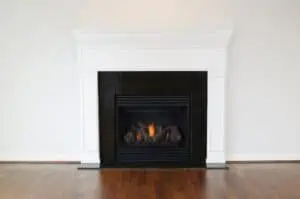Essential Parts to Build a Propane Fireplace
Whether you’re a newcomer or an experienced gas fire pit builder, there are a few essential parts to a propane fire pit that you should know before you begin. These parts will ensure that your propane fire pit creates a roaring flame.
(Searching in Google “gas fireplace service“? Contact us today!)

The first step is to locate the best location for your fire bowl. You can do this by using a hole saw or a step drill. Before you begin drilling, make sure you’ve got the right size couplers to attach your LP tank regulator.
You’ll also need an air mixer. This is used to draw in the fresh air, which helps the liquid propane burn more completely. It’s best installed as close as possible to the burner.
You can also use wire mesh to cover the bottom of the gas burners. This will help prevent the clogging of the drain.
Finally, you’ll need to secure your propane tank. Make sure to use two hose clamps to attach the hose to the propane line. The propane tank should be at least a ten-pound tank. The tank should be securely mounted on a sturdy wooden or Masonite board. If you already have a propane tank, you can use it as the tank mounting board.
Depending on the type of burner you choose, you can use an air mixer or a key valve. The latter will allow you to control the height of the flame without opening the cabinet.
You can also use an electronic ignition switch. These come in different models, from match light to complicated installation. This will allow you to turn the on/off the system without opening the cabinet. It’s also safer than using matches.
The key to a successful fire pit is to use dry wood. When the wood is wet, it may not burn as efficiently. Also, liquid propane may leave a sooty residue on the fire glass. A glass flame guard can help reduce soot.
You may also want to consider a high-pressure adjustable regulator. These allow you to control the flame height from 0 to 20 psi. These are the quickest to install. The regulator has a window that displays the amount of propane in the tank. The regulator also reduces the pressure in the tank.
You’ll also want to use a high-temperature silicone sealant on the NPT fitting for the sand. This sealant will help prevent the sand from leaking.
The burners you use in your propane fire pit should be tested before you begin the installation. You’ll want to be sure that you don’t hear gas running when the ignitor is closed. It’s also a good idea to place lava rocks in a slight pocket around the ignitor prongs. This will help cover the stainless steel showing through.
You’ll also need a hose to attach to your LP tank. Make sure to use a flexible hose, as corrugated or elbow connectors will not work. You’ll also want to avoid sharp turns in the flex hose. You’ll also want to make sure that the area around your propane fire pit is free of flammable items.

